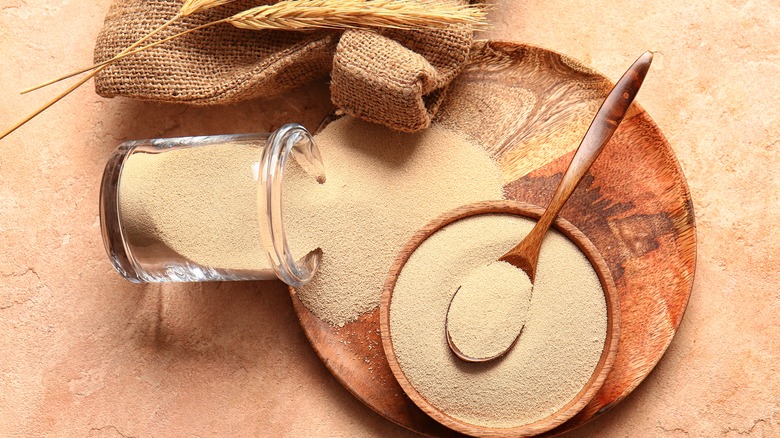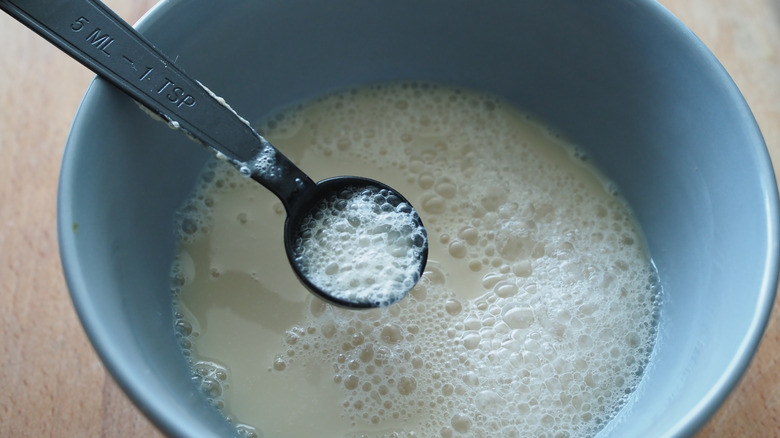What Is The Correct Temperature Needed To Activate Yeast?
Bread is famously fickle and a lot of that has to do with the nuances of temperature, time, and activating one of its essential components: yeast. According to MasterClass, yeast is a single-celled organism that consumes sugar and starch to produce carbon dioxide gas, which is what causes bread to rise. The process of producing the yeast most of us will buy in stores involves cultivating its growth before drying it under high heat and grinding it up. This produces yeast with a hard protective coating that helps extend its long shelf life.
As Taste of Home notes, that protective coating is why you need to activate yeast in order for it to work best. Active dry yeast, the one most bread recipes call for, is dormant in its shelf-stable state and needs warm water to wake it back up. This transformation is known as proofing, which is done not only to activate yeast, but to make sure it is still alive inside its shell before you mix it into your bread.
But, like bread itself, yeast is sensitive to small fluctuations in its environment and water that is the wrong temperature can either kill your yeast or keep it from activating properly.
Aim for a temperature around 110 degrees Fahrenheit
Yeast comes in a few different varieties beyond active dry yeast, but no matter what type you are using, the ideal range is pretty narrow. According to Bob's Red Mill, hot water between 105 and 115 degrees Fahrenheit will be best for your common active dry yeast. This is just enough to dissolve the dried out yeast and wake it up, but comfortably short of the temperatures that could kill it. Once you start getting into the range of 140 degrees Fahrenheit you risk overheating your yeast, and dead yeast will mean flatbread instead of regular bread. Serious Eats notes that the temperature range for activating other yeasts is a little higher or lower, depending on the style. Instant yeast does better between 120 and 130 degrees Fahrenheit, while fresh yeast, which doesn't have a coasting to dissolve, is good at as low as 95 degrees Fahrenheit.
How do you know your water is the right temperature? The easy way is using a digital thermometer, which is a useful tool for other parts of the bread-making process as well. If you don't have a thermometer handy, you can go with good-old-fashioned touch by just using your wrist, shares Serious Eats. Water just above 100 degrees Fahrenheit will feel pleasantly warm on your wrist, but not hot, perfect for yeast. If it feels either cool or too hot you could be in for trouble.
Follow those few simple rules, and your bread making just got that much easier.

